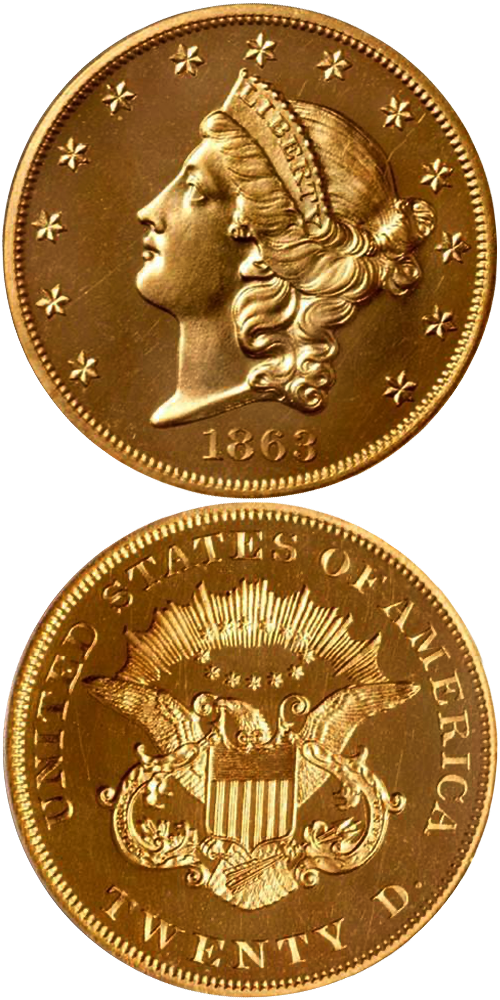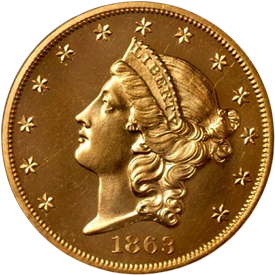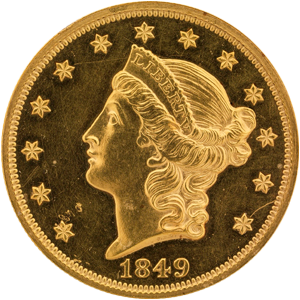Designed by: James Barton Longacre
Issue Dates: 1849 (pattern); 1850-1865
Composition: 90% gold, 10% copper
Diameter: 34 mm
Weight: 33.43 grams (515.90 grains)
Edge: Reeded
Proof Mintage: 375 (estimated)
Proof gold has rightly been called “the caviar of numismatics” and few would argue with that appellation. This was not always the case though, for in the late 19th and early 20th century, the premiums for the larger Proof gold coins in particular was miniscule and their high face value often resulted in them being “spent” rather than saved. A fair number of $20 Liberties (especially the last 20 years of production between 1887 and 1907) can be found today in grades of PR-50 to PR-58, indicating that the roughly $500 they represented in purchasing power today was a temptation many collectors (or their heirs) could not pass up.
While all Proof $20 Liberties can justifiably be called “rare,” the Type I “No Motto” and Type II “Twenty D.” coins are far and away the toughest. Due in some part to their low original mintage (typically in the range of 20 to 50 pieces) and the fact that not all were sold, the survival estimates for most dates fall into the 8-12 range, with no dates before 1877 showing over 20 pieces extant.
Proof $20 Liberties today are among the costliest and most prestigious U.S. coins on the market, with choice examples (PR-63 to 64) trading for upper 5-figure to low 6-figure sums, and Gems (PR-65 to 67) worth low to mid 6-figures. While only a relatively few collectors have the financial wherewithal to acquire one of these prizes, gazing upon a high-grade cameo or deep cameo example is truly an awe-inspiring experience.








